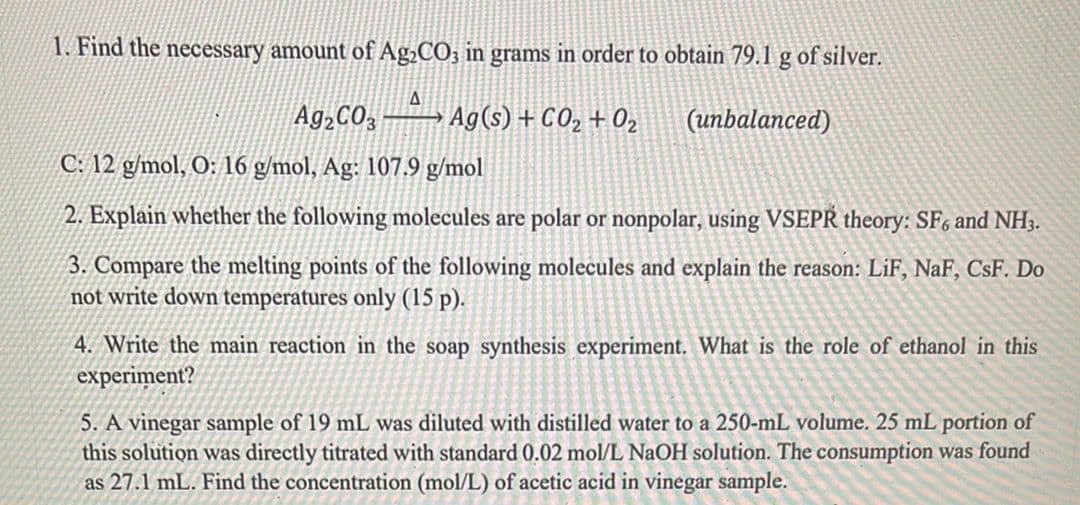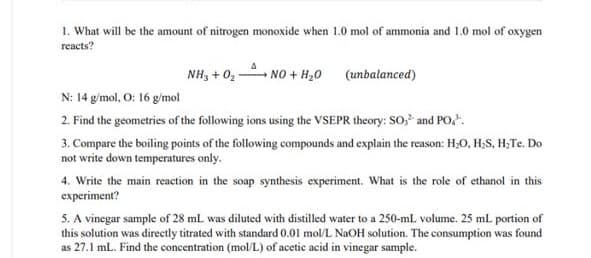1. Find the necessary amount of Ag,CO; in grams in order to obtain 79.1 g of silver. Ag,CO3 =→ Ag(s) + C02 + 02 (unbalanced) C: 12 g/mol, O: 16 g/mol, Ag: 107.9 g/mol 2. Explain whether the following molecules are polar or nonpolar, using VSEPR theory: SF, and NH3. 3. Compare the melting points of the following molecules and explain the reason: LiF, NaF, CsF. Do not write down temperatures only (15 p). 4. Write the main reaction in the soap synthesis experiment. What is the role of ethanol in this experiment? 5. A vinegar sample of 19 mL was diluted with distilled water too a 250-mL volume. 25 mL portion of this solution was directly titrated with standard 0.02 mol/L NAOH solution. The consumption was found as 27.1 mL. Find the concentration (mol/L) of acetic acid in vinegar sample.
Analyzing Infrared Spectra
The electromagnetic radiation or frequency is classified into radio-waves, micro-waves, infrared, visible, ultraviolet, X-rays and gamma rays. The infrared spectra emission refers to the portion between the visible and the microwave areas of electromagnetic spectrum. This spectral area is usually divided into three parts, near infrared (14,290 – 4000 cm-1), mid infrared (4000 – 400 cm-1), and far infrared (700 – 200 cm-1), respectively. The number set is the number of the wave (cm-1).
IR Spectrum Of Cyclohexanone
It is the analysis of the structure of cyclohexaone using IR data interpretation.
IR Spectrum Of Anisole
Interpretation of anisole using IR spectrum obtained from IR analysis.
IR Spectroscopy
Infrared (IR) or vibrational spectroscopy is a method used for analyzing the particle's vibratory transformations. This is one of the very popular spectroscopic approaches employed by inorganic as well as organic laboratories because it is helpful in evaluating and distinguishing the frameworks of the molecules. The infra-red spectroscopy process or procedure is carried out using a tool called an infrared spectrometer to obtain an infrared spectral (or spectrophotometer).


Step by step
Solved in 3 steps with 2 images









